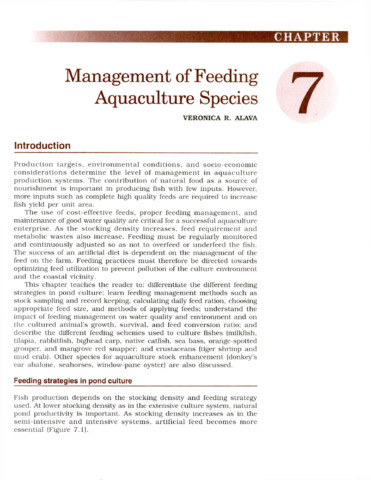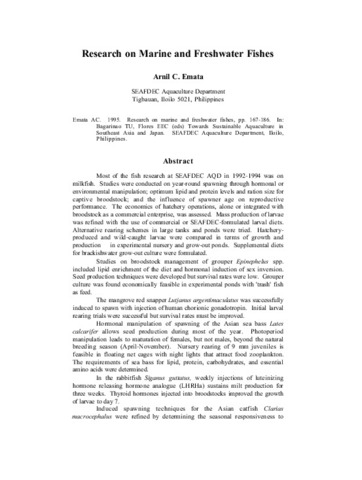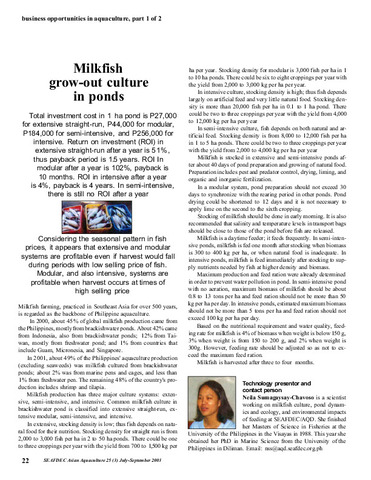Milkfish (Chanos chanos) fingerling production in freshwater ponds with the use of natural and artificial feeds
- Global styles
- MLA
- Vancouver
- Elsevier - Harvard
- APA
- Help

View/
Date
1989Page views
8,426ASFA keyword
AGROVOC keyword
Taxonomic term
Metadata
Show full item record
Share
Abstract
Milkfish fry were reared to fingerling size in freshwater ponds. For the first experiment, fish were fed the blue-green algae Oscillatoria inoculated and grown in the ponds, Oscillatoria supplemented with a fishmeal-based formulated diet, and the formulated diet alone. Twelve 50-m2 earthen ponds were prepared to enhance growth of the indigenous natural foods. Acclimated wild milkfish fry were stocked randomly at 90/m2 and were fed for 6 weeks. Milkfish fed the formulated diet alone had a significantly higher (P<0.05) mean weight gain (1.314±0.201 g) than milkfish given the combination of Oscillatoria and formulated diet (0.882±0.230 g). Growth was lowest for fish fed Oscillatoria alone. The feeding treatments in the second experiment were: combination of Spirulina powder and formulated diet, formulated diet alone, and rice bran alone. The stocking rate was equivalent to 91.5–92.5 fry/m2 and feeding lasted for 7 weeks. All feeds promoted some growth but the milkfish fed the formulated diet alone invariably had the highest weight increment (1.504±0.167 g), followed by fish given the feed combination (0.881±0.140 g). Rice bran alone gave the lowest growth response. For both pond experiments, growth trends of the young milkfish were similar to those grown under laboratory conditions. Although survival rates were significantly different in one aquarium experiment, survival rates of milkfish in ponds did not differ significantly (P>0.05) among treatments.
Suggested Citation
Santiago, C. B., Pantastico, J. B., Baldia, S. F., & Reyes, O. S. (1989). Milkfish (Chanos chanos) fingerling production in freshwater ponds with the use of natural and artificial feeds. Aquaculture , 77(4), 307-318. https://doi.org/10.1016/0044-8486(89)90215-9
Type
ArticleISSN
0044-8486Collections
- Journal Articles [1258]
Related items
Showing items related by title, author, creator and subject.
-
Management of feeding aquaculture species
Alava, Veronica R. (Aquaculture Department, Southeast Asian Fisheries Development Center, 2002)This chapter teaches the reader to: differentiate the different feeding strategies in pond culture; learn feeding management methods such as stock sampling and record keeping, calculating daily feed ration, choosing ... -
Research on marine and freshwater fishes
Emata, Arnil C. (Aquaculture Department, Southeast Asian Fisheries Development Center, 1995)Most of the fish research at SEAFDEC AQD in 1992-1994 was on milkfish. Studies were conducted on year-round spawning through hormonal or environmental manipulation; optimum lipid and protein levels and ration size for ... -
Milkfish grow-out culture in ponds
Sumagaysay-Chavoso, Neila (Aquaculture Department, Southeast Asian Fisheries Development Center, 2003)Milkfish farming is regarded as the backbone of Philippine aquaculture. In 2001, nearly 50% of the Philippines' aquaculture production was milkfish cultured from brackishwater ponds. It has 3 major culture systems: extensive; ...





